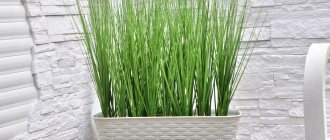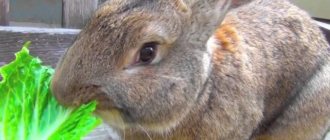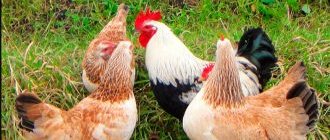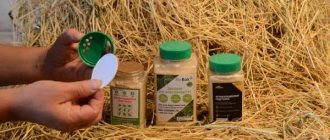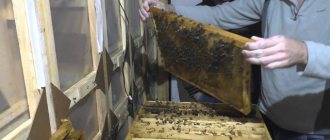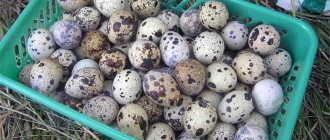When breeding rabbits on a farm, the place where they are kept plays a special role. And the best option in this case would be a special mini-farm for rabbits. Such a product will allow you to fully support the physiological needs of the animal, and will also simplify the process of caring for animals. Moreover, the design of the rabbit mini-farm is quite simple, which makes it easy to assemble it at home.
Rabbit breeding
Types of mini farms for rabbits
With the development of rabbit breeding, approaches to the construction of houses for such animals gradually developed. As a result, several different types of mini-farms for breeding rabbits have emerged. The main ones include:
- decorative;
- designs for country house keeping of rabbits;
- farms for backyard breeding (medium);
- large industrial options.
All of the listed structures differ from each other in size, features of keeping and servicing rabbits, and individual design aspects. Thus, a decorative rabbit mini-farm is designed to keep 1-2 animals and completely excludes year-round living in such a house. A large industrial rabbit farm houses a large number of rodents. In addition, it requires quite a lot of space for placement and a large staff to provide care.
Such trusses also differ based on their design. In this regard, the most famous are:
- mini-farm for rabbits Mikhailov;
- Tsvetkov's cell;
- Zolotukhin mini-farm.
Each of these rabbit houses is designed taking into account the basic physiological characteristics of animals. Moreover, they all differ in their unique assembly nuances. But among all the varieties presented above, the mini-farm designed by Mikhailov is the most popular among rabbit breeders from all over the world.
Staff
A rabbit breeding farm requires the constant work of an entire production team:
- Operator worker, 1 person. They are engaged in servicing the rabbit population, monitoring the vital activity and health of individuals.
- Worker for slaughtering rabbits and packing meat, 1 person. Kills animals (possibly using electric current), cuts up products, packages them, packs them, puts them in refrigerators. The remaining 2 positions can be outsourced.
- Veterinarian. Manages the organization and implementation of all sanitary and veterinary measures, advises workers.
- Engineer. Monitors the serviceability of equipment and carries out repairs.
You may also need the services of an electrician, a cleaner, an accountant, or a driver for delivering meat.
Farm components
As already noted, making a mini-farm for rabbits with your own hands is quite simple. But before starting work, you should understand in detail what exactly it consists of. Most designs of rabbit houses require the following components:
- a strong stand on which the entire rabbitry is located;
- a container for collecting manure installed under the slatted floor;
- a walking compartment in which animals can be active;
- queen cell, where the female rabbit will bring young.
Rabbit hutch design
Additional components that simplify caring for animals include:
- the second tier, which also assumes the presence of a main platform and a nest;
- bunker feeders that allow you to add food to animals 1-2 times a week;
- a special V-shaped hay barn, which is installed in cages that can accommodate several animals living in separate compartments;
- heated drinking bowls, designed for use in rabbitries for year-round outdoor keeping of animals.
How to start?
Before you start, you should take care of the legal and economic aspects of the enterprise. A business from scratch will require the following resources:
- growing space. You will need a plot of land, the desired size of which is at least 15 acres. It is legally prohibited to grow near residential buildings;
- electricity, water, heat. Like any other living species, rabbits require basic conditions to survive;
- equipment: drinking places, food, cages, tools;
- carnage. Necessary for direct production of products;
- feed.
The listed resources are required for both a large enterprise and a mini-farm. Optionally, staff may be required if the novice rabbit breeder is not going to work alone.
The lion's share of expenses will be taken up by feed. It is recommended to acquire a special warehouse with supplies for several months in advance. It is easier to purchase food in bulk: large quantities at a cheap price. Animals' favorite food is hay and grains. The experience of professionals has shown that rabbits do not like crushed cereals. It is best to make mixtures from different crops.
Compound feed for rabbits
Choosing feed for rabbits
A small enterprise should start with 2-3 mini-farms, which will include 3 females and 1 male. If we take into account equipment and feed, the final amount of starting capital will be approximately 120,000 rubles. A small business has low risks and requires modest investments.
A system of two mini-farms ensures a good start in business
Advice: 16 females is the ideal number for productive and profitable activities. As the event grows, you should reach this figure.
Thus, a sample business plan would look like this.
| Initial costs | Monthly costs | Income |
| Livestock equipment | Feed | Sale of fur and meat |
| about 120,000 rubles | 1500 rubles | Depends on the livestock |
Feed granulator
A rabbit farm can be opened in two organizational and legal forms: individual entrepreneur and private household plot. The comparison is given in the table below.
| IP | Private household plots |
| You can switch to the Unified Agricultural Tax | Tax exempt |
| Activities are controlled by Rosselkhoznadzor | The activity is controlled by the city or village administration |
| Documents: certificates, declarations of conformity | Title documents, sanitary book |
Breeding on a private farm. Convenient and no need to pay taxes
Which one to choose? Personal farming is suitable for small farms, since there is no tax burden. On the other hand, market agents and state-owned enterprises are more willing to cooperate with individual entrepreneurs. In addition to individual entrepreneurs and private household plots, you can also create peasant farms. By the nature of its activities, a farm is no different from an individual entrepreneur.
Stages of work
For an experienced rabbit breeder, self-assembling a mini-farm for long-eared rabbits is not particularly difficult. But for beginners in this field, assembling a cage with your own hands can be a real problem. In this case, you should strictly adhere to the algorithm given below and thoroughly work through each stage.
Create a drawing
Developing a detailed drawing of the future mini-farm will allow you to get a clear idea of the work ahead, as well as accurately select the amount of material.
It is compiled on paper or in a special computer program. Moreover, to work out the details, the rabbitry is depicted in transverse, longitudinal and horizontal sections. If the house is two-tiered, a horizontal section of each floor is depicted separately.
The following nuances are especially carefully considered in the drawing:
- connection points of the main structural elements;
- clear location of feeders and drinkers;
- location of doors (main and, if necessary, in the queen cell);
- exact dimensions of the future structure and its individual elements.
Purchase of materials
Based on the exact drawing, the amount of required materials is calculated. To assemble a standard rabbit mini-farm you will need:
Materials for building a rabbitry
- long wooden blocks (the optimal cross-section is 30x40 mm);
- boards;
- metal grid;
- fiberboard sheet;
- roofing felt;
- available roofing material;
- curtains for doors;
- galvanized iron sheet;
- rivets, nails or screws.
Attention! Also, to treat wooden elements, special antifungal compounds and a can of paint are required.
Tools
To work with these materials, you need to prepare the following tool:
- hacksaw;
- hammer;
- plane;
- scissors for cutting metal;
- pliers;
- jigsaw;
- drill;
- building level;
- roulette
It is also advisable to prepare in advance the place where the assembly will be carried out. It should be spacious enough to make it comfortable to work.
What you need to know about choosing a location
You won’t need to allocate a large amount of space; 1.5 square meters will be enough. m. A garden plot located outside the city, a corner of a summer house or a backyard is suitable for installation. The structure can be installed outdoors or indoors, the main thing is not to forget about sanitary standards.
Rabbit farm
The farm must be removed from residential areas to prevent the penetration of odors released during the life of eared livestock. If the outdoor option is chosen, then you need to take care of canopies that will protect the rabbits from bad weather conditions.
Where to locate a rabbit farm?
No less important than the construction of a cage for rabbits is its correct placement. Such a design should be warm in cold weather, easy to clean, and also not cause inconvenience to people living nearby.
Based on the above, a mini-farm for rabbits is located at a certain distance from all residential premises. The minimum distance should be such that the smell of manure does not reach the residents.
To prevent drafts, the house is mounted with a solid wall facing north. In this case, the lattice front wall is located towards the south. This placement will also provide the living creatures with maximum sunlight during the daytime.
If there are a large number of cells, they are arranged in two rows with the front walls facing each other. At the same time, enough space is left between the rows so that it is convenient for an adult with equipment to pass through.
Do-it-yourself mini rabbit farm: step-by-step instructions
After developing the drawings and selecting the material, they move on to the actual construction of the structure. All work is carried out in the following stages:
- The stand is made from timber. For strength, the vertical beams in the middle of the length and at the top are connected with boards.
- In the center of the stand there is a special shelf for containers for manure. A galvanized hopper in the shape of an inverted pyramid is installed above it. It will drain feces into a bucket or trough.
- The frame of the future cage is installed on the stand. It consists of two paving rectangles connected by vertical bars.
- Inside, a floor is made of slats, a wall of the uterine compartment, stationary feeders, and drinking bowls are installed.
- First the back walls are sheathed with boards, then the side walls. After this, they move on to assembling the front mesh wall and doors.
- At the end, everything is coated with paint, insulated and the roof is installed.
Important! The finished product should not contain sharp corners, burrs on the boards or protruding nails. Such irregularities are immediately corrected to avoid injury.
Particular attention is paid to the walls of the rabbitry. The gaps between the boards are covered with roofing felt to prevent drafts. If desired, it can be replaced with galvanized steel.
Equipment for cages
The last step will be the correct arrangement of the finished cage. First of all, a container for collecting manure is placed on the prepared shelf. It should be located so that it can be easily changed if necessary.
Then feeders and drinking bowls are installed inside. The best option is a stationary bunker feeder. When using it, food enters the cage only when the previous portion runs out. In this case, dirt and manure do not get into the food, but the supply is replenished 1-2 times a week.
Drinking bowl in the rabbitry
Automatic drinkers are also used. They do not require frequent inspection and provide animals with a constant supply of clean water. If necessary, such structures are supplemented with heating to prevent moisture from freezing.
Sales of products
Industrial production of rabbit meat in Russia is still at the formation stage. However, the demand for meat is high and remains largely unsatisfied. Experts predict an increase in rabbit meat consumption by approximately 1-2% per year.
The manufacturer has several sales channels for the product.
Firstly, forming your own client base. We are talking about the farmer’s own acquaintances, his family’s acquaintances, and so on. Word of mouth is important, especially if you offer meat inexpensively.
You also need to place advertisements in newspapers and on the street. This way an entrepreneur can create his own base of regular customers.
The second channel is sales through stores. We are talking about retail stores and small chains. You can sell meat to restaurants.
Mikhailov's mini-farm
Academician Mikhailov’s approach to rabbit breeding is extremely interesting. In the 70s of the last century, he developed a unique rabbit mini-farm, the main feature of which was the almost complete autonomy of the animals. Today, such cages are used by both professional breeders and ordinary owners of small farms.
Design Features
The design of Mikhailov’s mini-farm, despite all its advantages, is extremely simple. It is made in several tiers. Moreover, only the back wall of the entire structure is made continuous. The front and side walls are made exclusively of metal mesh, which promotes better ventilation and fuller use of natural light.
Other design features of such a farm include the following:
- each rabbit has a separate compartment, separated from the others by a mesh partition;
- a forced ventilation system is responsible for air circulation inside;
- the upper of the three tiers is used for walking animals (often this is not done, complementing the middle tier with a walking area);
- bunker feeders and drinking bowls are installed on the middle one;
- the lower tier is a stand and a shaft for collecting manure;
- the floor in the rabbitry is made of slats, packed in small increments, which facilitates the natural removal of manure;
- Such a house is covered with a pitched sloping roof.
The design also has special shelves for equipment.
Advantages
It is worth noting that the high popularity of such a house for rabbits is based on a wide list of advantages of the structure. The main ones include:
- the growth of rabbits and their reproduction rates increase significantly;
- the cage takes up less space than separate ones for each animal;
- the mini-farm is almost completely autonomous, which reduces the time spent on maintenance;
- food and water do not get dirty with animal feces;
- the design greatly simplifies preventive and therapeutic procedures.
Dimensions
The dimensions of such a building are individual. They depend on the size and composition of the rabbit population. The main criterion when calculating the area is the fertility of females. If a female rabbit gives birth, then the size of the rabbitry is optimal; if the litter is delayed, then perhaps she does not have enough space and the cage needs to be expanded.
Selection of materials
Rabbit farmer I. M. Mikhailova
It is quite simple to assemble I.M. Mikhailov’s rabbitry at home. The first stage of such work is the selection of suitable materials. The following is required:
- durable wooden beam – 4 pcs.;
- board (preferably oak) – 4 pcs.;
- fiberboard slab – 3 m;
- plywood - 2 sheets;
- galvanized iron sheet;
- roofing felt sheet for cladding;
- dye.
To connect the elements, use nails and screws. The tool is selected in accordance with the selected material.
What are the benefits of business
Anyone who has never been involved in animal husbandry will be interested to know how profitable this activity is. If we turn directly to rabbit breeding, then we hear only positive characteristics from people involved in this particular industry due to the following reasons:
- animals are unpretentious, and therefore you should not think about large financial investments;
- the ability to reproduce quickly makes it possible to increase the livestock several times in a short period of time;
- in-demand products: meat and fur will always find their buyers.
Now you need to figure out what products can be obtained by breeding rabbits:
- The main place is occupied by meat, which can be sold both wholesale and retail. The majority of orders come from restaurants;
- Fur products are used in light industry as materials for sewing outerwear;
- sale of live rabbits. Many people have eared beauties as decorative pets. The price here largely depends on the breed;
- You can also use rabbit waste, which is a very good fertilizer for your garden plot.
If we talk about profitability, it is about 70%, which is a very good indicator that guarantees the success of the enterprise. Thanks to rapid reproduction (up to 30 babies can be produced from one rabbit in 365 days), the business quickly pays off. The same applies to growth rate: in 30 days an animal can increase its weight several times. By the 90th day of life, a rabbit can gain weight suitable for slaughter.
Construction of a Mikhailov mini-farm with your own hands
All assembly work fits into the following algorithm:
- A stand is made from timber and boards. A triangular shaft made of fiberboard is also installed here to collect manure.
- A first floor frame made of timber and boards is installed on top.
- Floor slats are laid on the lower frame of the frame with a small span between them.
- After finishing work on the floor, the entire space of the tier is divided into a refectory, walking and nesting area.
- The nesting room is complemented by a separate hinged door. It will allow you to control the female rabbit with her young after giving birth.
- For simplicity, bunker feeders and a drinking bowl are installed on the sides of the rabbitry, making the roof wider so that it prevents moisture from entering the feed.
- Ruberoid is laid on top of the frame and a pitched roof is installed.
- If desired, the walls of the structure are also covered with roofing felt.
At the end of the work, all burrs, protruding nails and metal elements are removed from the structure. All surfaces are coated with paint for better preservation. You can put galvanized strips on the floor slats to prevent animals from chewing them off.
Mini-farms for rabbits greatly simplify the care of such animals. In addition, their design has a beneficial effect on the growth of animals and also promotes faster reproduction. Of course, because of these advantages, finished products of this type are quite expensive in stores. But if you wish, it is quite possible to assemble the mini-farm you like with your own hands.





